
by Mx. Kris Vyas-Myall
Picnic on Paradise by Joanna Russ
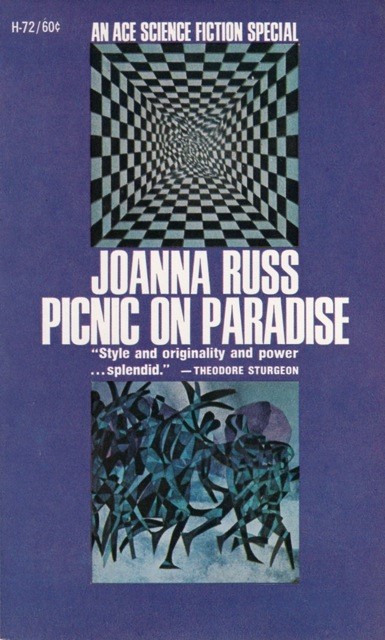
Cover by Leo and Diane Dillon
As people who read my review of last year’s Orbit will recall, I loved Joanna Russ’ new fantasy hero Alyx the Adventuress. These stories combined a modern sensibility, great characterization and the kind of fun you would get from Howard or Leiber.
Needless to say then, I was extremely excited to learn we would be getting a new novel of Alyx’s adventures so soon afterwards. Trying to go into the book with as little foreknowledge as possible, I found it was definitely not the story I was expecting.
When we last left Alyx she was escaping Orudh and planning her next move. In the opening paragraph of Picnic on Paradise we are reintroduced to her:
“I’m sorry, ma’am, but I cannot believe you are a proper Trans-Temporal agent; I think-” and he finished the thought on the floor his head under one of his ankles… “I am the Agent, and My name is Alyx.
To understand what a sharp diversion this is, imagine picking up Robert E. Howard’s Conan the Conqueror and finding it opens in 1917 with Conan at the Battle of the Somme. A fascinating choice but also one that requires a lot of readjustment of expectations as well as explanations.

Eventually what we piece together is that while she was escaping by sea after robbing the Prince of Tyre, she was somehow brought to the future and has come to work for the transtemporal agency. Although she has learnt some elements and language of this future millennia and these weird new worlds, she is still largely a stranger.
What is continued from the previous installments is Alyx’s impatience for impractical people. Here it is the tourists she must shepherd across Paradise. They are all different representatives of this future, showing different facets of the time, but for Alyx they are all fools in one way or another, coddled by society and unable to survive without it.
In some ways this could be seen as a version of Montaigne’s Des Cannibales but it significantly improves upon it. Whilst the original uses cultural relativism as a means to critique contemporary society, Russ sets up two opposing societies as alien to us as each other: the ancient Mediterranean of Alyx and the highly complex future of the tourists, and compares them to make more complex points as well as building fascinating worlds.
It should not be thought as an old-fashioned kind of text at all, as it does not pull any punches. Instead, we have explorations of drugs, sex, religion, complex psychology, violence, humanity and much more. It is like all of society attempting to be distilled into one perilous journey.
I know it is only January but if this isn’t to be my favourite novel of 1968, something really special will have to come along in the next 11 months.
A very high Five Stars

by Victoria Silverwolf
Short and Not So Sweet
I recently came across a trio of new works of speculative fiction that don't require a lot of time to read. In fact, I was able to finish all three books in one day. Each features a fair amount of disturbing material, even though one is a comedy, one is intended for younger readers, and one is a action-packed thriller. Let's take a look at these brief, dark-tinged novels.
The Heart of a Dog, by Mikhail Bulgakov
I use the word new loosely for this satiric Russian novella from an author who died in 1940. It was actually written in 1925, but has never been officially published in the Soviet Union. (I understand that copies of it have been circulated in the underground form known as samizdat.) Michael Glenny's translation is its first appearance in English, I believe.

Cover design by Applebaum & Curtis, Inc., according to the back cover, but the artist remains anonymous.
In classic horror movie fashion, a Mad Scientist adopts a homeless pooch for the bizarre purpose of transplanting a dead man's testicles and pineal gland into the animal's body. (The detailed descriptions of surgery are the gruesome parts of the book. Dog lovers beware.)
The mutt changes into a man, of a particularly vulgar sort. The canine fellow claims to be a loyal Communist, turning against the aristocratic scientist and siding with the bureaucrats who want the doctor to give up several rooms in his apartment.
It's obvious that the author is attacking the Bolshevik revolution in his portrait of the dog-man and the other collectivists. He also satirizes quack medicine of the time.
The narrative alternates from first person, in the dog's point of view, to third person, sometimes in a single paragraph. Some readers may find these sudden transitions jarring, although otherwise the book is quite readable. (Kudos to the translator.)
Despite the blood-soaked scenes of surgery and the savage satire of Communism, much of the novel is pure slapstick. There's an extended sequence in which the newly created man chases a cat, leading to the flooding of the apartment. Overall, the book is both amusing and thought-provoking.
Four stars.
The Weathermonger, by Peter Dickinson
Next we have an unusual fantasy for young people. I think this is the author's first book.

My sources suggest that this art is by John Holder.
We jump right into a scene of nail-biting suspense. A sixteen year old boy and his kid sister are trapped on a small rock in the sea off the coast of England. Folks with spears are ready to kill them if they make it back to shore. The tide is rising, ready to drown them.
The boy got hit on the head by one of the mob and has amnesia. This gives the girl a good excuse to tell her brother (and the reader) what's been going on for the last five years.
A mysterious something made the inhabitants of Britain hate machines. They've gone back to a medieval way of life. The boy was caught messing around with a motorboat, and his sister was seen drawing pictures of machines. The fanatical locals are ready to execute them for witchcraft. (Apparently the anti-technology effect has worn off on them.)
The boy is a weathermonger; that is, he can control the weather with his mind. (Every village in England has one, it seems. I suppose it's a side effect of the machine-hating phenomenon.)
He uses this power to create a fog. The siblings escape, make their way to the forbidden motorboat, and reach France. (The anti-technology effect is limited to Britain.)
That's just the start of their adventures. The French authorities, seeing that they are immune to the phenomenon, send them back to track down its source. Thus begins a wild odyssey to Wales, making use of a snazzy 1909 Rolls Royce Silver Ghost stolen from a museum. (I get the feeling the author is in love with that classic car.)
It's an exciting book, with one heck of a climax. The explanation for what's going on strains credibility, even for fantasy. The story is too intense for very young readers, I think, but it should be fine for teenagers. Adults who don't mind reading so-called juveniles should enjoy it as well.
Four stars.
City of the Chasch, by Jack Vance
The cover makes it clear that this is the start of a series. The name of the series, and the illustration, suggest that we're in for the kind of SFnal sword and sorcery yarn you might find in an old copy of Planet Stories. That's pretty accurate, but there's a bit more to it.
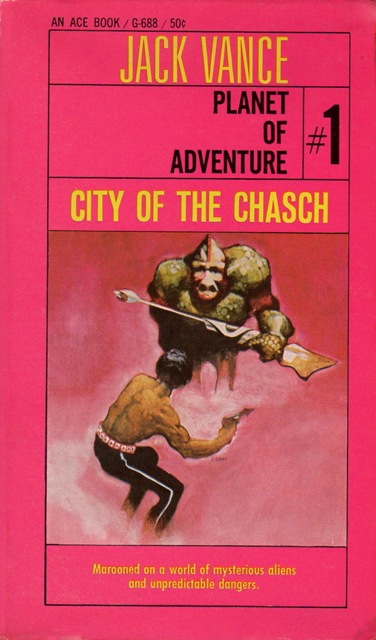
Cover art by Jeff Jones, who also provides a couple of interior illustrations.
The author doesn't waste any time. In just a couple of pages, a starship is destroyed by a weapon launched from the planet it's orbiting. A scout ship carrying two guys crashes on the planet. A few pages later, one of them is dead.
Let's catch our breath and see where we are. See the tiny black dot in the middle of the left side of the map? That's where the scout ship landed. The sole remaining hero won't get very far from that spot by the time the book ends. He just travels a bit to the northwest, not even reaching the coast. There are a few references to other places on the map, but the vast majority of the rest of the planet is going to have to wait for other volumes in the series.

The map art is not credited, but might be by Jeff Jones as well.
If you think the geography is complicated, wait until you hear about the population. There are humans of many different cultures present, for reasons explained later. There are at least four species of aliens, broken up into subgroups. The aliens who give the book its title, for example, are divided into the Old Chasch, the Blue Chasch, and the Green Chasch.
Complicating matters is the fact that some humans are (pick one) servants/slaves/worshippers/devotees/imitators of the various aliens. One such person is the book's most amusing character.
With all this going on, we still have a nonstop action-packed plot, as our hero sets out on a seemingly hopeless quest to get back to Earth. Along the way, he meets the traditional beautiful princess, whom he has to rescue from captivity no less than three times.
(At this point, I had to wonder if the author was poking subtle fun at the kind of work produced by Edgar Rice Burroughs and Robert E. Howard.)
The story is full of violence and, frankly, kind of puerile. What distinguishes it from a typical thud-and-blunder yarn is the extraordinarily intricate setting. The author is a master of creating exotic cultures, and that's a lot more interesting than the endless killing and corny plot.
If the male characters are two-dimensional, the females are one-dimensional. The princess exists only to be stunningly beautiful, get kidnapped, and fall in love with the hero. There's a cult of priestesses who hate men and loathe attractive women. There are no other female characters of any importance, just servants and the like.
Three stars.

by Gideon Marcus
Operation: Time Search, by Andre Norton

Taking a break from her various long-running series, Andre Norton, one of the most prolific science fiction novelists, has produced a new one-off. It's a simple, dare I say, old-fashioned tale wherein ex-GI Ray Osborne gets inadvertently whipped into the distant past when he stumbles across an experimental time travel beam. Emerging into the primeval forests of "The Barren Lands" that will one day be North America, he is quickly captured by a party of Atlanteans (as in from the lost continent of Atlantis) and turned into a galley slave. Fortunately, he is able to make his escape, with the help of a fellow prisoner named Cho. The two, now sword-brothers, secure passage on a warship commissioned by Atlantis' rival, the Pacific continent-nation of Mu. On said ship, Ray and Cho make their way to the land of the Sun, where Ray is elevated to the aristocratic rank of Sun-born and welcomed.
But Ray is in for more than he bargained, as he is imbued with a subconscious geas to infiltrate the perfidious former colony of Atlantis and stop their nefarious plan to bring in other-worldly demons, their doomsday weapon in a cold war about to turn hot…
Operation: Time Search is all very Burroughsian in its setup and execution, up to and including the pseudo-scientific, modern era bookends (that do not add much to the book save padding). It's essentially riproaring action from beginning to end, and Norton delivers it competently. There are also agreeable relationships between the sword-brethren Ray and Cho, as well as, later in the book, Ray and a buccaneer captain named Taut.
This is a peculiarly shallow book, however. The Murians are portrayed as universally good and just (even when they commit actions that are not so nice, as in making Ray an unwitting weapon). The Atlanteans are foul in every respect. This could be fine–after all, when has Conan been subtle? But the writing is peculiarly sparse, almost oblique, when describing the many visceral horrors and foes of this bloody world, almost as if Norton were censoring herself (or perhaps she was censored after the fact). An encounter between Roy and "The Loving One", a gruesome Lovecraftian menace, in particular suffers for this.
Plus, I was sad that the potentially interesting Lady Ayna, captain of a Murian warship, essentially disappears shortly after her introduction. The saintly Lady Aiee, Cho's mother, is not nearly so compelling; in any wise, she is gone halfway through the book, too. Really, there just isn't a lot to become attached to in this book: Ray isn't a good enough character, and the setting is too one dimensional.
All in all, it felt like Norton was just going through the motions on this one. Three stars.

by Cora Buhlert
70 Pfennig – they'd rather walk

1967 was no quiet year, but full of unrest, protests and violence, at least here in Europe. And so far, 1968 seems to follow suit.
Until now, the protests and unrest have been confined to the bigger cities, particularly West Berlin. My hometown of Bremen did have its share of protests, but those were mostly just a few dozen people standing around on the market square, holding up placards. Though protests are getting bigger even here. On the day before Christmas, there was a protest against the war in Vietnam of several thousand overwhelmingly young people outside the US general consulate.
Right now, however, Bremen is seeing the biggest protests since the Bremen Soviet Republic fifty years ago. And for once, those protests are not against the war in Vietnam or the West German emergency laws or a visit of the Shah of Persia or former Nazis in positions of power, but about something far more mundane, namely an increase in bus and tram fares from 60 to 70 Pfennig for single tickets and 33 to 40 Pfennig for group tickets popular with students and apprentices. On the surface, this increase seems modest. However, for students, apprentices and young people in general who neither have cars nor a lot of money and rely on public transport to get around the city, even a small fare increase is a big problem.
The tram protests started small on January 15 with approximately fifty students of several Bremen high schools protesting the fare increase on the Domsheide square, one of the main tram traffic hubs in the city center. When the protest was ignored, the students decided to stage a sit-in on the tram tracks. The police removed the students, whereupon the protest continued outside Bremen central station – another major traffic hub – where other young people joined in.

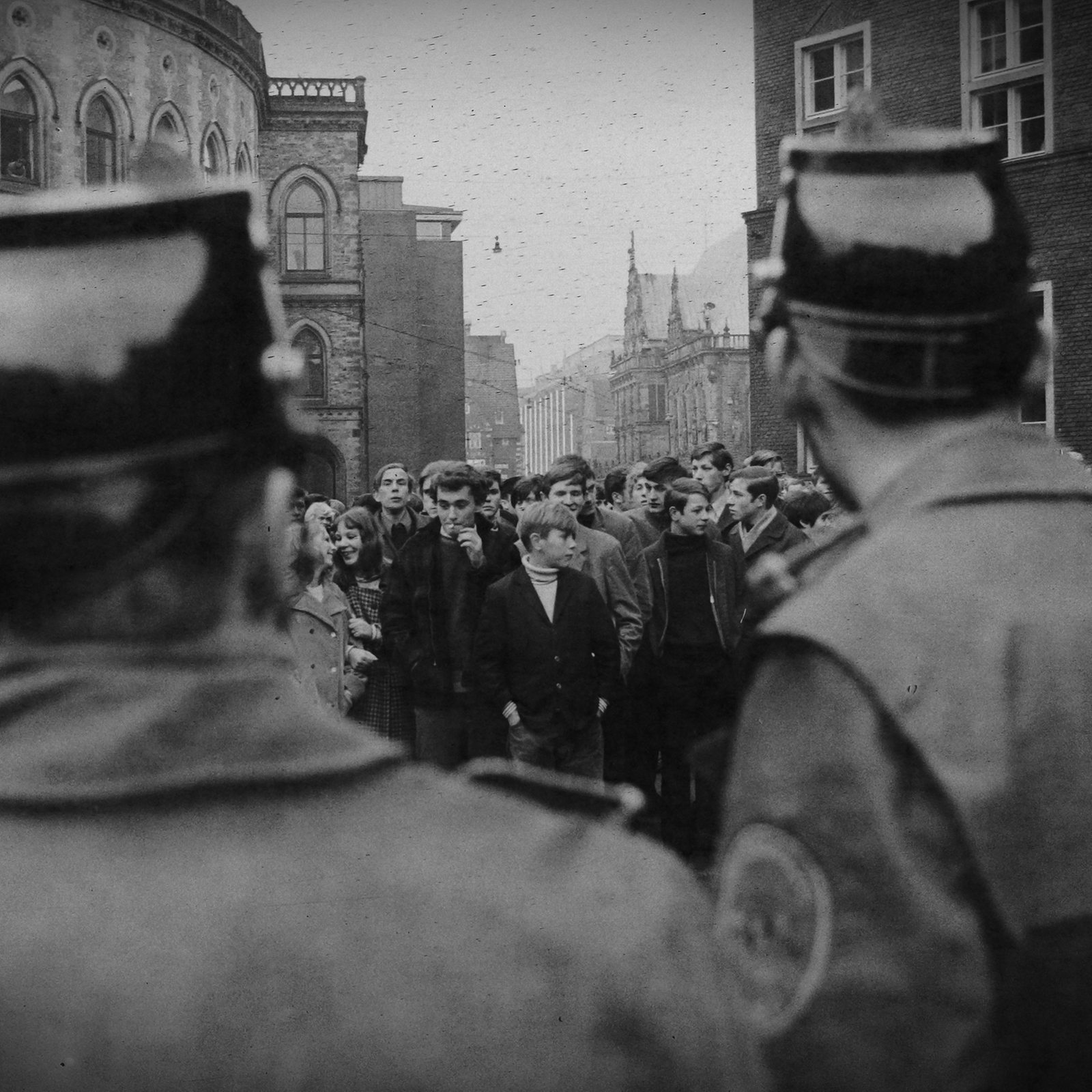
In the following days, the protests continued to grow. On January 16, there were roughly 1500 young people staging a sit-in on the tram tracks, holding placards with slogans like "70 Pfennig – Lieber renn' ich" (70 Pfennig – I'd rather walk). The initial protesters had been high school students, but by now they were joined by students of the technical and pedagogical colleges and apprentices of various local companies. The protest managed to bring tram traffic in Bremen's city center to a complete halt with a backlog of trams stretching all across town.
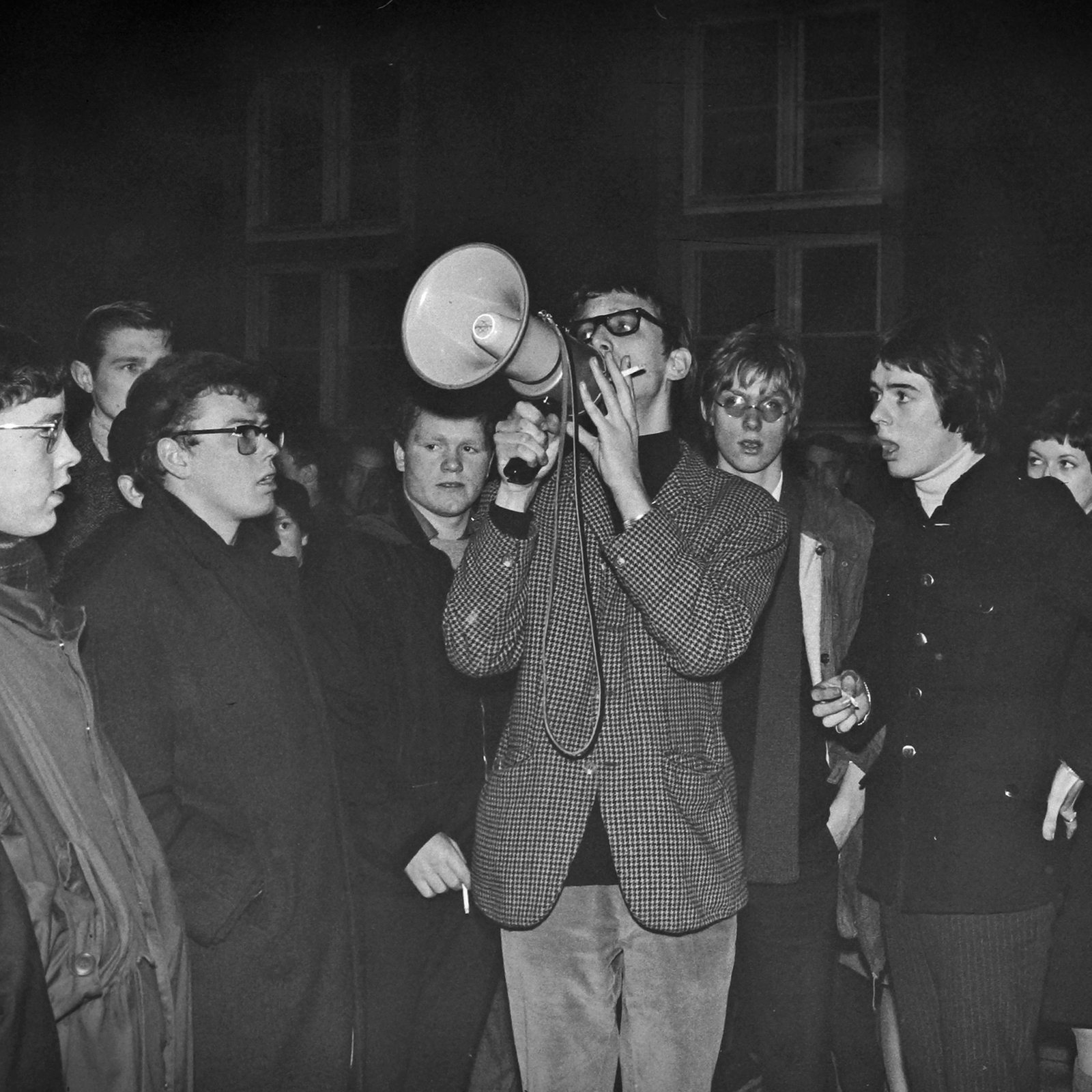



And the protest was still growing. The next day, there were 5000 young people protesting and blocking the tram tracks to the point that the public transport company BSAG suspended all tram traffic across the entire city.

Bremen's chief of police Erich von Bock und Polach, who was a Colonel in the Waffen-SS before he reinvented himself as a member of the Social Democratic Party, proved that he had learned nothing whatsoever from the tragic events in West Berlin last June and ordered the Bremen police to attack the protesting students with truncheons, batons and water cannons. Hereby, the police not only managed to beat up several innocent bystanders, but the resulting unrest also caused damage to twenty-one tram cars and fourteen busses.




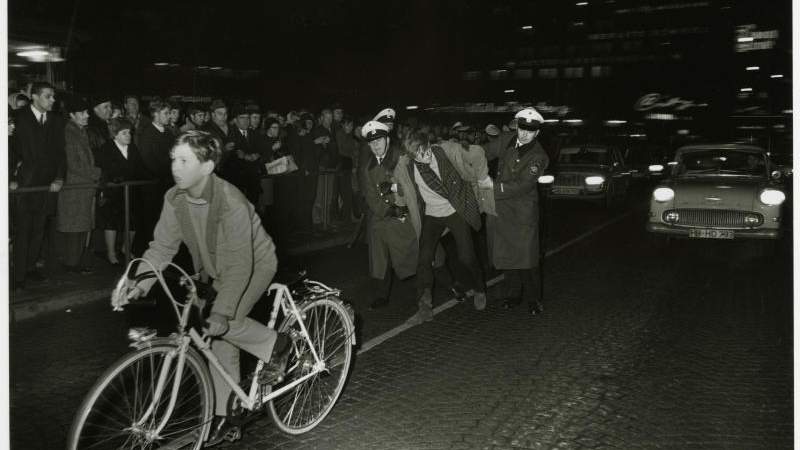
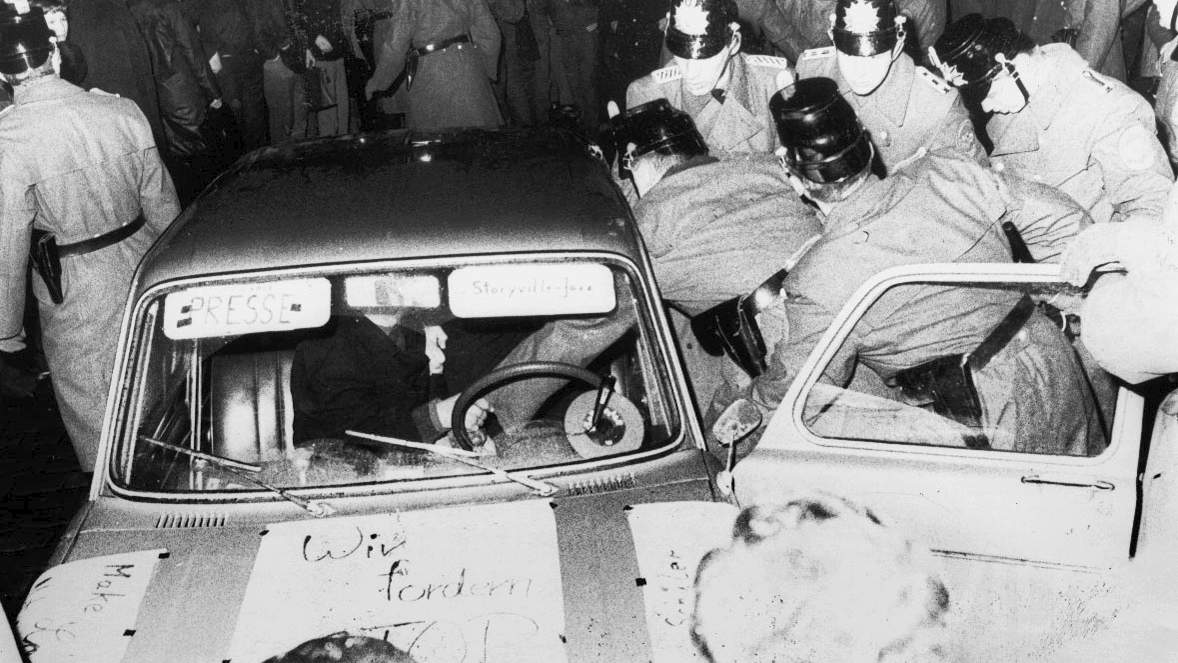

Chaos on the streets of Bremen
And still the protests grew. The workers of the AG Weser shipyard and the Klöckner steelwork, the two biggest companies in Bremen, employing thousands of people, many of whom rely on public transport, declared their solidarity with the protesting students and apprentices. By January 18, twenty thousand people were protesting in the city center.
The city was in utter chaos by now and the Bremen senate held an emergency meeting. Thankfully, cooler heads than the noxious chief of police von Bock und Polach prevailed and so Bremen's new mayor Hans Koschnik, who has only been in office since November, met with representatives of the protesters in the townhall, while the protests were still going on outside and threatened to boil over into violence again.


An unlikely heroine emerged in 54-year-old Annemarie Mevissen, deputy mayor and senator for youth, sports and education. Mrs. Mevissen left the relative safety of the townhall and went out to talk to the protesters directly. On the Domsheide, where the protests had begun four days earlier, Mrs. Mevissen climbed onto a crate of road de-icing salt, grabbed a megaphone and spoke to the protesters, explaining why the fare increases were sadly necessary, but also expressing sympathy for the protesters. Annemarie Mevissen's speech as well as the meeting with Mayor Koschnik did the trick and the protests gradually ceased. As of today, trams and busses are mostly running again.

By chance, I was shopping in the city center on the second day of the protests. I could still get into the city by tram, but by the time I wanted to go home I had to walk several kilometres to where I had parked my car. However, I still found the time to stop at my favourite import bookstore to peruse their spinner rack of English language paperbacks.
The Return of the Dynamic Duo: The Swords of Lankhmar by Fritz Leiber

Fritz Leiber's delightful pair of rogues, Fafhrd and the Gray Mouser, have had a troubled publication history. They debuted in the pages of Unknown, Astounding/Analog's fantasy-focussed sister magazine, almost thirty years ago. After Unknown's demise in 1943, Fafhrd and Gray Mouser were left adrift, until they finally found a new home in Fantastic under the editorship of Cele Goldsmith Lalli. However, with the sale of the Ziff-Davis magazines to Sol Cohen, the appearances of Fafhrd and Gray Mouser in the pages of Fantastic became scarce. It seemed the dynamic duo was homeless once again, unless they shacked up with Cele Goldsmith Lalli over at Modern Bride magazine, that is.
So imagine my joy when I spotted the brand-new Fafhrd and Gray Mouser adventure The Swords of Lankhmar in the spinner rack of my trusty import bookstore. Nor was this adventure short fiction, like the duos' previous outings, but a full length novel. So of course I had to pick it up, even if I had to carry it five kilometres through the city, dodging protesters and aggressive police officers.
The story
Fafhrd and Gray Mouser return to Lankhmar, only to find themselves first attacked and then hired by Lankhmar's overlord Glipkerio Kistomerces to escort a fleet of grain ships to a neighbouring city. The fleet's cargo is a gift to Movarl of the Eight Cities in exchange for some help with a pesky pirate plague. Also aboard the grain ships – and another gift to Movarl – are the Demoiselle Hisvet, daughter of Lankhmar's wealthiest grain merchant, her maid Frix and Hisvet's twelve trained white rats. The ship's captain isn't happy about the presence of the rats, because rats and grain don't mix. Meanwhile, both Fafhrd and Mouser are fascinated by the Hisvet and her maid.
It does not take long for trouble to find Fafhrd and Mouser, who soon find themselves fighting off monsters, pirates and rat attacks. The two rogues also have their hands full with Hisvet and Frix. Luckily, they get some help from Karl Treuherz, a German-speaking time-travelling hunter capturing monsters for Hagenbeck's Zeitgarten. Karl Treuherz (his last name means "true heart") is a delightful character, particularly if you're German and can understand not only his dialogue in flawless German (kudos to Mr. Leiber), but also understand that Hagenbeck's Zeitgarten is a riff on Hagenbecks Tierpark, the famous Hamburg zoo, which apparently will open a time- and dimension-travelling dependency in the future. Cover artist J. Jones clearly likes Karl Treuherz, too, and put him on the cover.

Something smells of rat here
If the story feels a little familiar, that's probably because it is. For the first half of The Swords of Lankhmar appeared under the title "Scylla's Daughter" in the May 1961 issue of Fantastic. That novella ended on a cliffhanger with the treacherous Hisvet and Frix escaping aboard one of the ships, leaving Fafhrd and Mouser marooned.
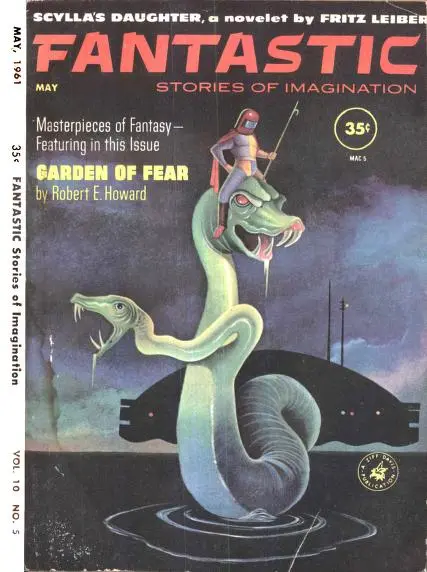
The novel follows the two ladies as well as Fafhrd and Mouser back to Lankhmar, where even more intrigues await. For sinking a fleet of grain ships was just the start for Hisvet and her twelve trained rats. It turns out that Hisvet and her father are members of a race of intelligent rats, who live in Lankhmar Below and want to take over the entire city. Mouser shrinks himself down to rat size to spy on them, only for the mad overlord Glipkerio to ignore his warnings in favour of building a contraption that may or may not send him to a parallel universe. The way of defeating the rat invasion is as obvious as it is ingenious by using the rats' hereditary enemy against them.
The Lankhmar Below scenes were my favourite parts, probably because as a kid, I envisioned thumb-sized beings, both humans and animals, who inhabit a parallel city in the sewers, basements and walls of our world. In order to cross between the two worlds you needed a magical shrinking potion. Reading Leiber's descriptions of Lankhmar Below felt as if he had reached into my mind to bring my own fantasy world to the page. Or maybe there really is a parallel world of intelligent rodents and both Fritz Leiber and I somehow stumbled upon them in early childhood.

An ode to interracial and interspecies romance
Because this is a Fafhrd and Gray Mouser story, there also are plenty of romantic entanglements. Mouser falls for Hisvet and finds himself wondering if she's human or rat underneath her floor-length gown and if it even matters to him. Fafhrd prefers Frix, but Hisvet likes Frix, too. Furthermore, Mouser is fascinated by Reetha, a maid at the overlord's palace who is completely hairless, while Fafhrd starts a relationship with Kreeshkra, a ghoul with transparent skin and flesh who is basically a walking skeleton.
Over the past few years, the amount of sex in science fiction and fantasy has been creeping upwards, as the sexual revolution makes it possible to write about previously taboo subjects. This is not necessarily a good thing, since some writers feel the need to foist sexual fantasies that had better remained private upon the unsuspecting reader – see Piers Anthony's Chthon or John Norman's Gor books. Thankfully, Leiber does not go this route, even though there is quite a bit of sexual content, including sexual content of the more unusual sort, in The Swords of Lankhmar. However, nothing here is even remotely as prurient as Chthon or the Gor books. Instead, Leiber's message – even spelled out at one point – is that love is love, no matter the gender, race or species of the participants. And indeed, none of the women Fafhrd and Mouser become involved with in this story are in any way standard love interests. Frix is a black woman, Reetha's hairlessness does not match any classic beauty standards, Hisvet may or may not be part rat and Kreeshkra is essentially a walking skeleton. Furthermore, there are several not so subtle hints that Hisvet and Frix are in a romantic relationship as well.
All in all, The Swords of Lankhmar is a thoroughly enjoyable fantasy adventure and a welcome return to the world of Nehwon and its most famous rogues. However, the plot meanders a bit, particularly in the second half. The genre that Robert E. Howard pioneered in the pages of Weird Tales almost forty years ago and that Fritz Leiber named sword and sorcery works best in the short form. Almost all of Howard's tales about Conan the Cimmerian or Kull of Atlantis, C.L. Moore's adventures of the medieval swordswoman Jirel of Joiry, which I hope will be reprinted eventually, as well as Michael Moorcock's stories about Elric of Melniboné and all previous Fafhrd and Gray Mouser stories have been novellas and novelettes. A genre that focusses on action and adventures thrives best in the short form and tends to meander at novel length, a problem that's also apparent in Robert E. Howard's sole Conan novel, The Hour of the Dragon, recently reprinted as Conan the Conqueror.
A fun, if meandering adventure tale.
Five stars.

![[January 20, 1968] Alyx and Company (January 1968 Galactoscope)](https://galacticjourney.org/wp-content/uploads/2023/01/680120covers-672x372.jpg)

![[January 16, 1968] Worthy programming (February 1968 <i>Galaxy</i>)](https://galacticjourney.org/wp-content/uploads/2023/01/680110cover-672x372.jpg)













![[January 14, 1968] As Is (February 1968 <i>Amazing</i>)](https://galacticjourney.org/wp-content/uploads/2023/01/amz-0268-cover-492x372.png)







![[December 20, 1967] Smut! (January 1968 <i>Fantasy and Science Fiction</i>)](https://galacticjourney.org/wp-content/uploads/2022/12/671220cover-672x372.jpg)
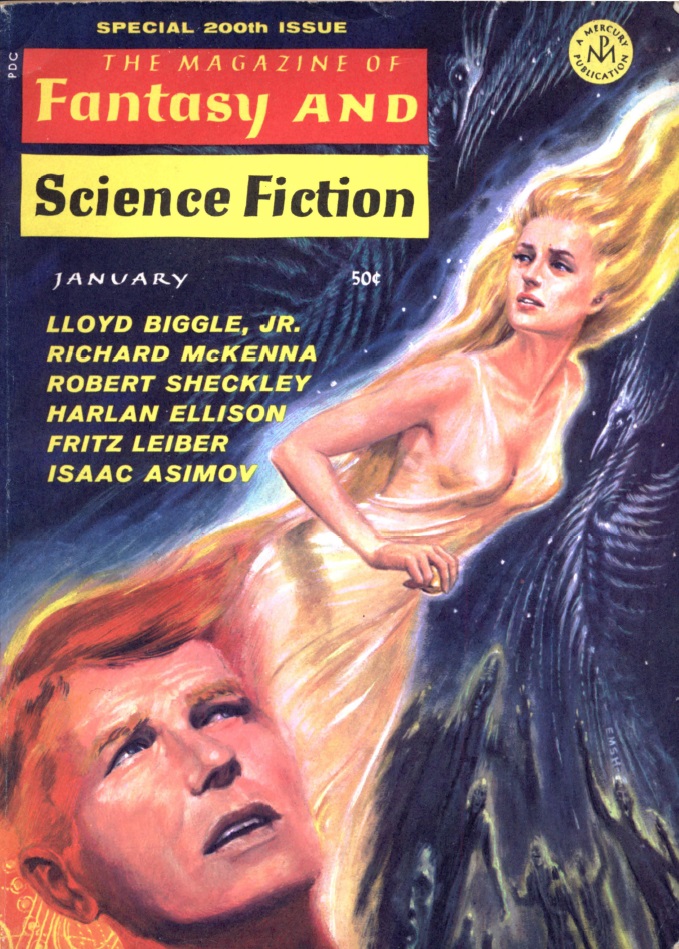
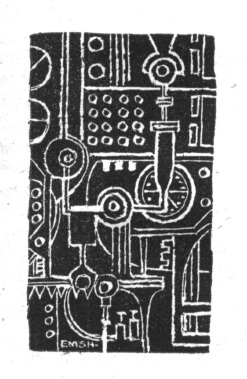

![[December 10, 1967] Give 'Em Hell, Harry! (January 1968 <i>Fantastic</i>)](https://galacticjourney.org/wp-content/uploads/2022/11/COVER-ART-3-672x372.jpg)

















![[December 6, 1967] Brotherly Love (<i>Dangerous Visions</i>, Part Two)](https://galacticjourney.org/wp-content/uploads/2022/11/DangerousVisions1stEdxx971656156_465_692_int-2.jpg)

![[November 8, 1967] Four to go (December 1967 <i>Galaxy</i>)](https://galacticjourney.org/wp-content/uploads/2022/11/671108cover-672x372.jpg)









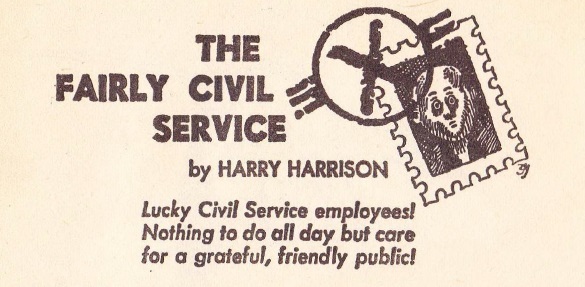

![[November 4, 1967] Conflicts (December 1967 <i>IF</i>)](https://galacticjourney.org/wp-content/uploads/2022/10/IF-1967-12-Cover-672x372.jpg)

 Joan Baez is arrested in Oakland.
Joan Baez is arrested in Oakland. Fr. Berrigan pouring blood into a file drawer.
Fr. Berrigan pouring blood into a file drawer. Futuristic combat in The City of Yesterday. Art by Chaffee
Futuristic combat in The City of Yesterday. Art by Chaffee![[September 18, 1967] Skål! (October 1967 <i>Fantasy and Science Fiction</i>)](https://galacticjourney.org/wp-content/uploads/2022/09/670918cover-672x372.jpg)





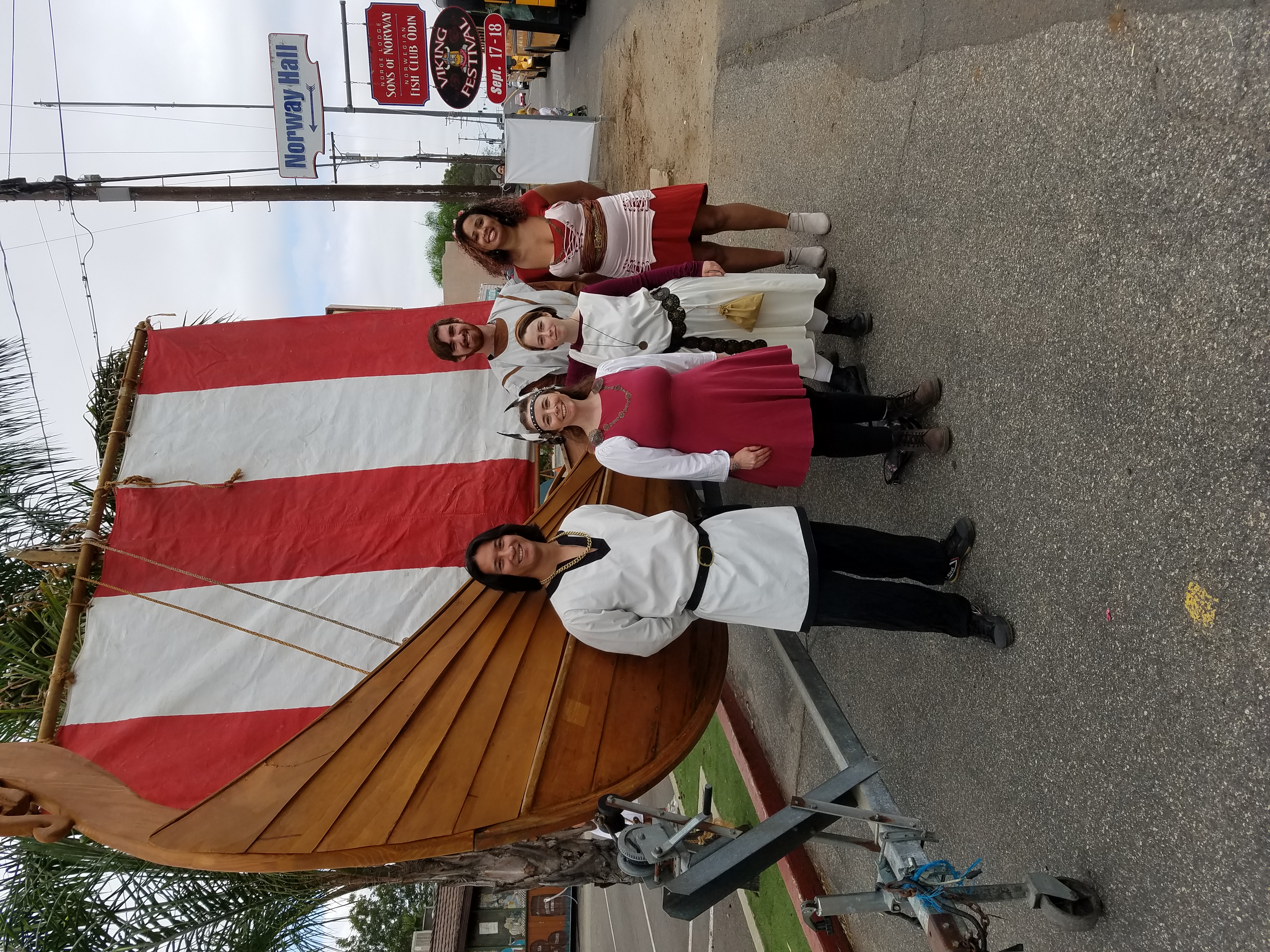

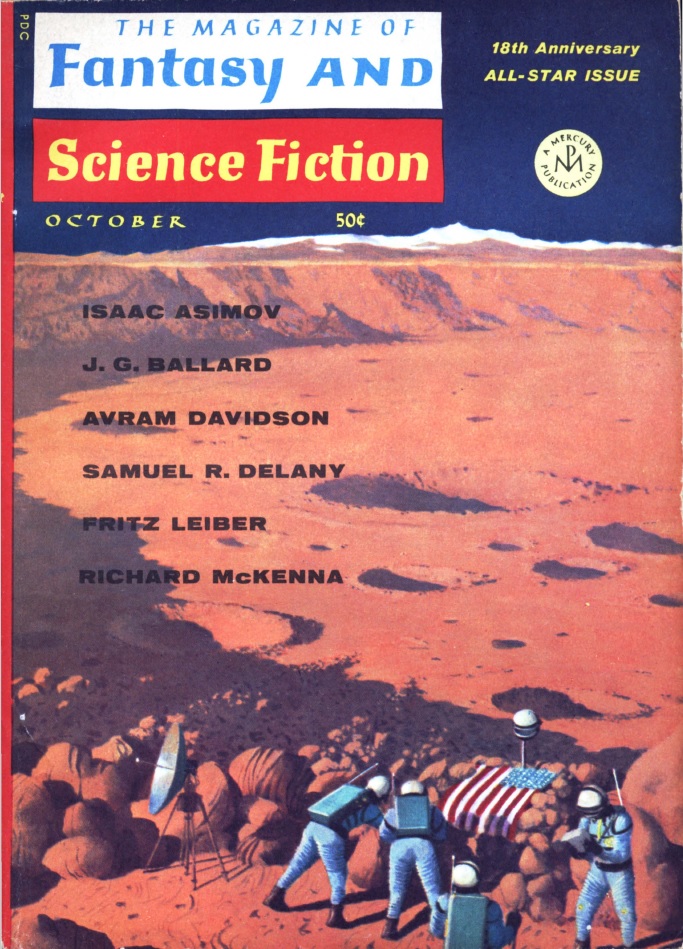
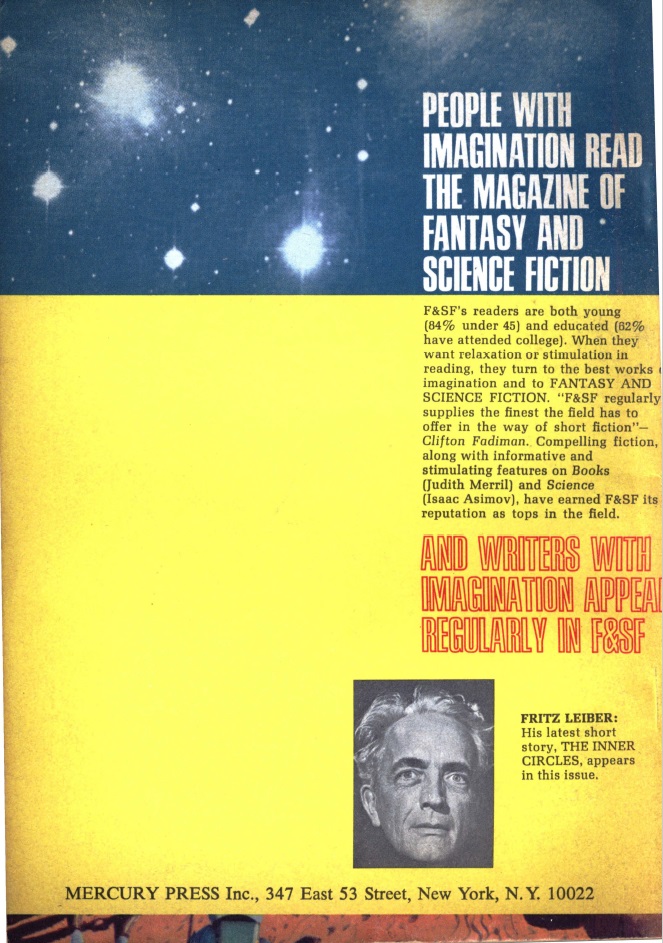
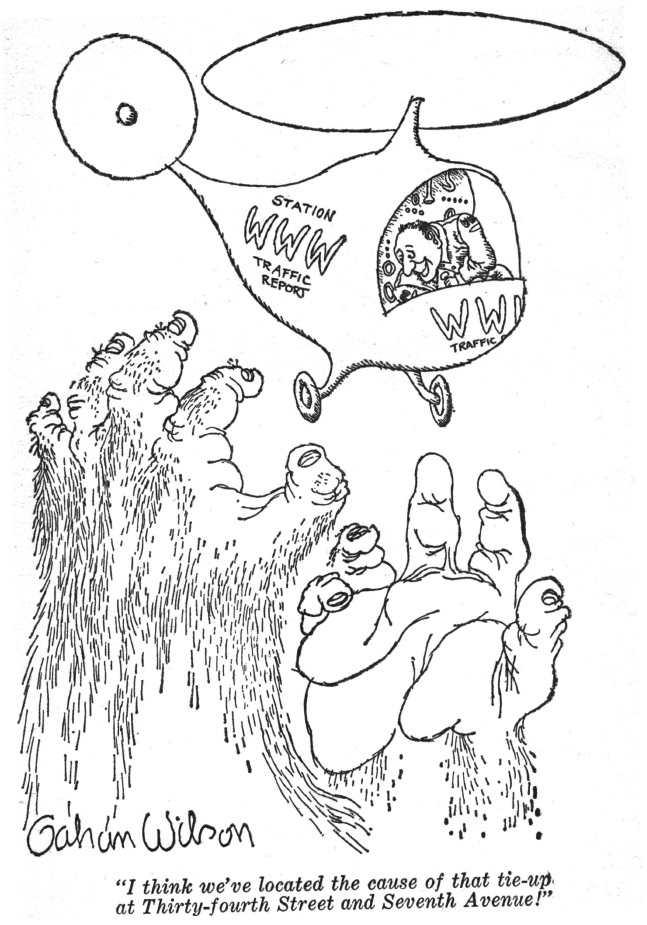
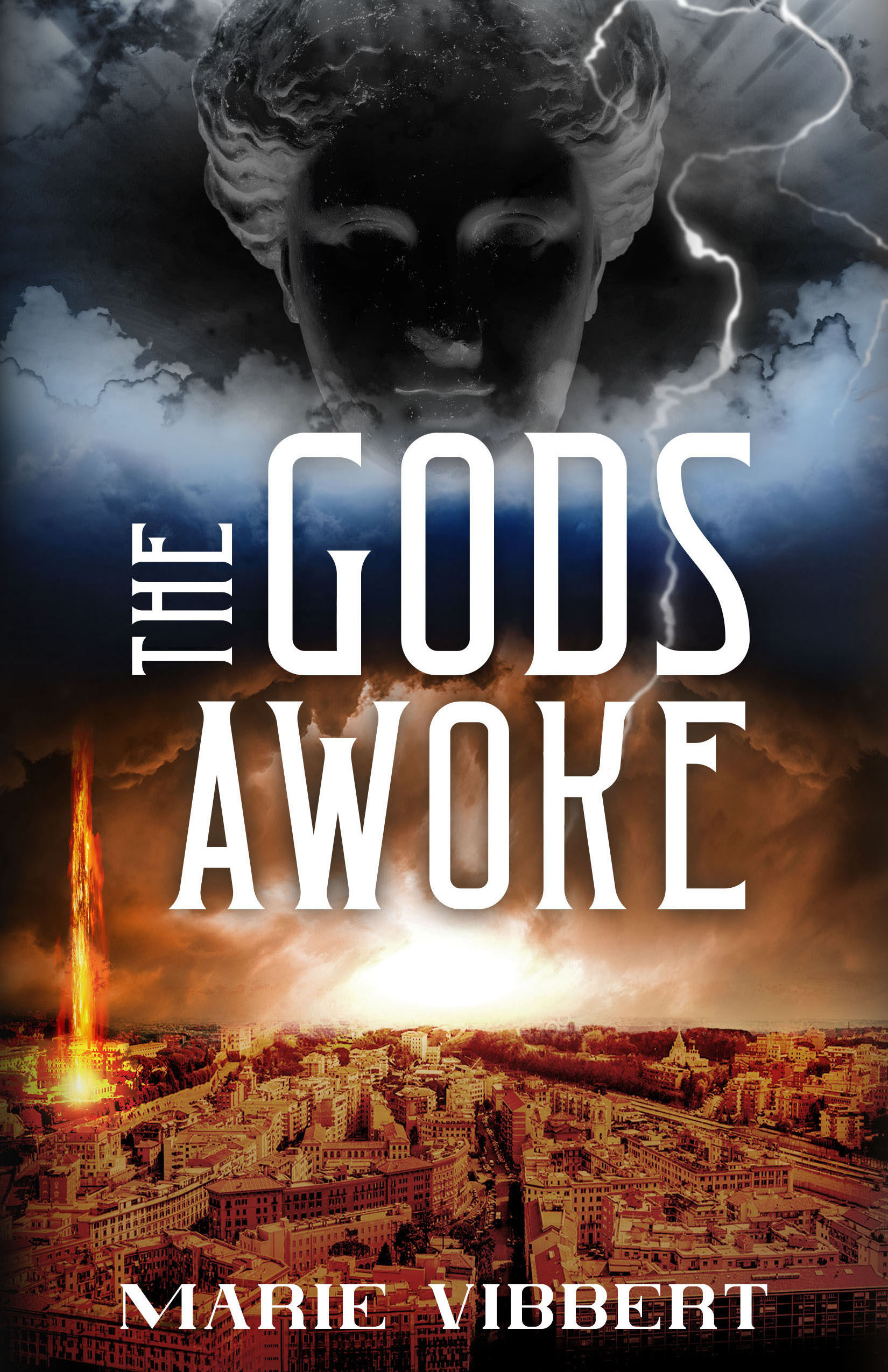
![[June 10, 1967] Music To Read By (July 1967 <i>Fantastic</i>)](https://galacticjourney.org/wp-content/uploads/2022/05/fantastic_196707-2-1.jpg)


















